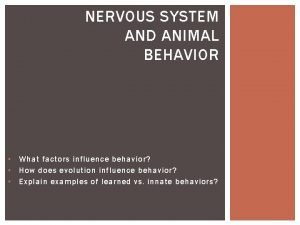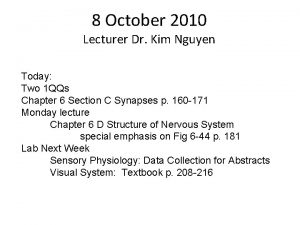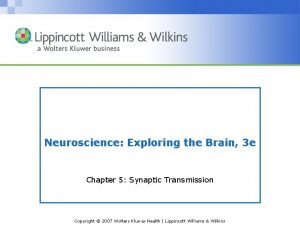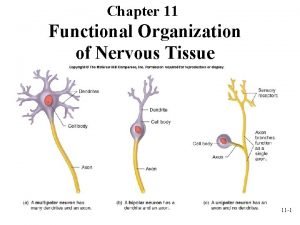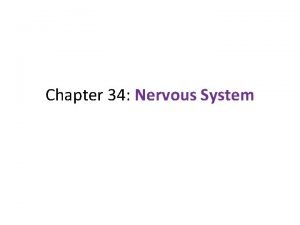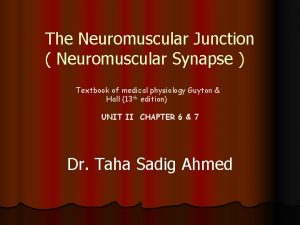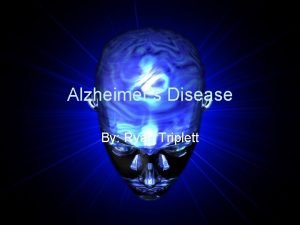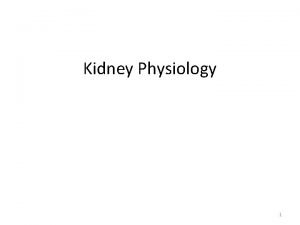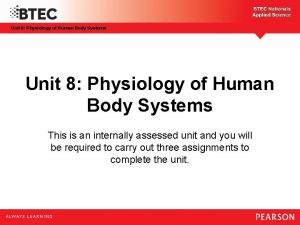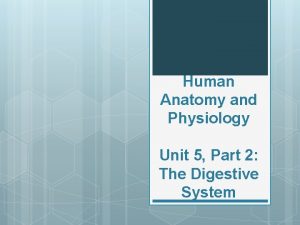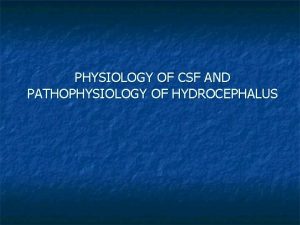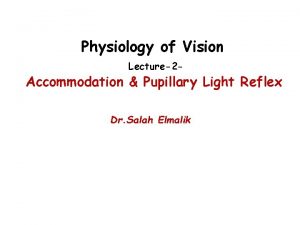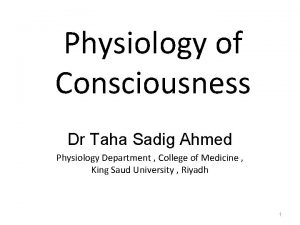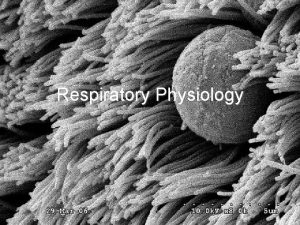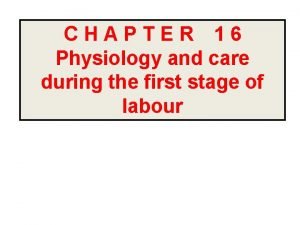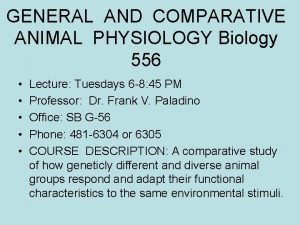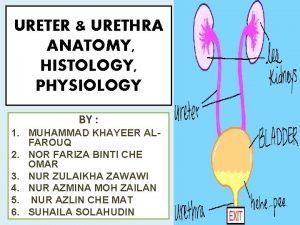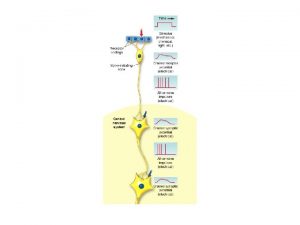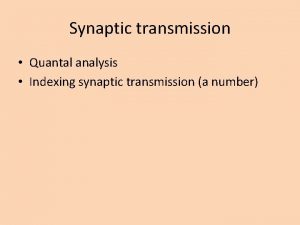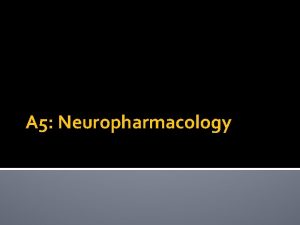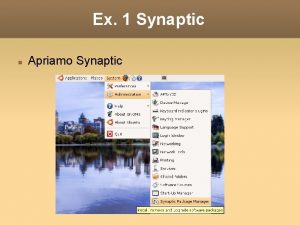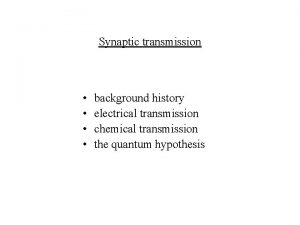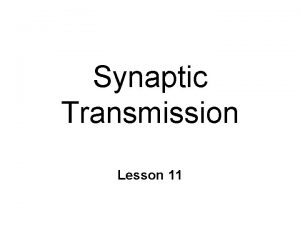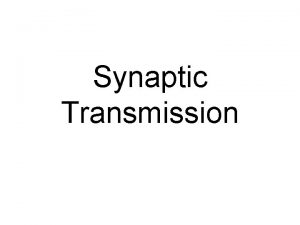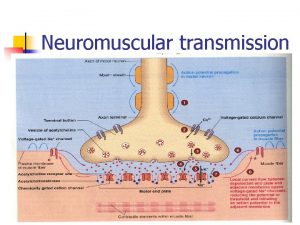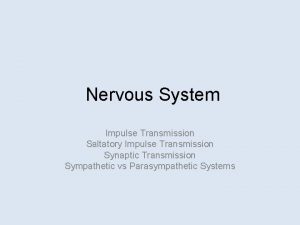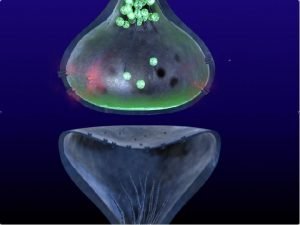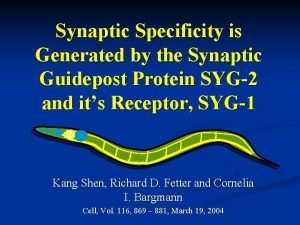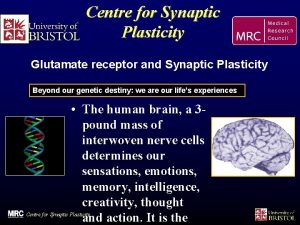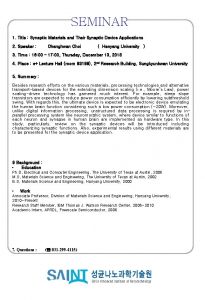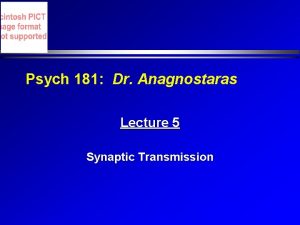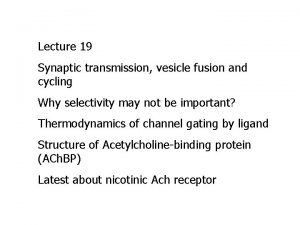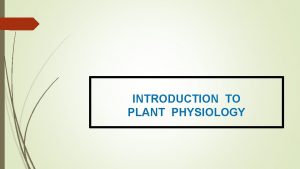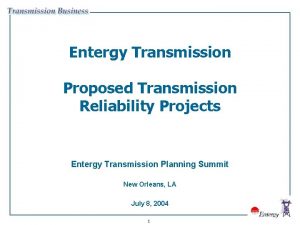PHYSIOLOGY 1 LECTURE 14 SYNAPTIC TRANSMISSION SYNAPTIC TRANSMISSION

































- Slides: 33

PHYSIOLOGY 1 LECTURE 14 SYNAPTIC TRANSMISSION

SYNAPTIC TRANSMISSION n Objectives: The student should know – 1. The types of synapses, electrical and chemical – 2. The structure and function of synapses – 3. Neurotransmitters, types, synthesis and removal

SYNAPTIC TRANSMISSION Synapses are one of the means by which excitable cells communicate with one another. Nerve to nerve synapse, nerve to muscle - neuromuscular junction, and nerve to gland neuroglandular junction n There are two general types of synapses n – Electrical Synapses (Gap Junctions) – Chemical Synapses (Neurological)

SYNAPTIC TRANSMISSION TYPES of SYNAPSES Electrical Synapses n 1. Characteristics of electrical synapses n – a. Gap junctions – b. Cytoplasmic continuity - direct ionic pathway cell to cell – c. No delay in transmission of the AP – d. Can be unidirectional or bidirectional – e. Locations - cell membrane to cell membrane protein interconnection

SYNAPTIC TRANSMISSION TYPES of SYNAPSES n 2. Types of Electrical Synapses (2) – a. Non-rectifying (bidirectional) electrical synapses - open channel between cells – b. Rectifying (unidirectional) electrical synapse - one way traffic

SYNAPTIC TRANSMISSION Electrical Synapse n n Nonrectifying Electrical Synapse This is a simple gap junction which when open connects cells cytosol to cytosol. Ions can move freely back and forth between cells, hence, action potentials.

SYNAPTIC TRANSMISSION Electrical Synapses n n Rectifying Electrical Synapse Because of the nature of the proteins making up these gap junctions may only move in one direction Example - From cell A to Cell B but not the reverse

SYNAPTIC TRANSMISSION Electrical Synapses n n Cytoplasmic Continuity Gap junctions allow closely aligned cells to communicate cytoplasm to cytoplasm by exchanging ions and other dissolved particles up to about 1500 mol. weight.

SYNAPTIC TRANSMISSION Chemical Synapses B. Chemical Synapses n Important characteristics --n 1. one way transmission n 2. time delay n 3. exocytosis n 4. diffusion n 5. receptor activation

SYNAPTIC TRANSMISSION Chemical Synapses n Anatomy of a Synapse – 1. Neuron structures - dendrites, soma (body), axon, terminal end or bouton, and axon hillock – 2. Synapse n a. Axosomatic synapse n b. Axodendritic synapse n c. Axoaxonic synapse (always inhibitory)

SYNAPTIC TRANSMISSION Chemical Synapses

SYNAPTIC TRANSMISSION Chemical Synapses

SYNAPTIC TRANSMISSION Chemical Synapses n B. Pattern of Chemical Synaptic Transmission – 1. Distinct separation of presynaptic and postsynaptic cells – 2. Can synapse on dendrites, soma, or axon – 3. Nerves usually synapse with more than one nerve normally many nerves – 4. AP in presynaptic cell converted to chemical signal – Postsynaptic membrane receives chemical signal and membrane potential is altered - Postsynaptic AP may or may not occur

SYNAPTIC TRANSMISSION Chemical Synapses n C. Characteristics of a Chemical Synapse – 1. One way signal conduction – 2. Synaptic delay – 3. Transmitter can alter the conductance of the postsynaptic membrane to Na+, K+, and CL– 4. A change in membrane conductance alters membrane potential – 5. Central tendency – postsynaptic nerves near the center of the axonal ending cone have a greater chance of passing on an action potential

SYNAPTIC TRANSMISSION Chemical Synapses 5. AP is NOT produced at the synapse a. change in membrane potential is conducted electronically (local graded response) across the soma n b. membrane threshold is lower at axon hillock n c. AP will be generated IF the sum of all inputs to the cell causes the membrane potential to reach threshold n

SYNAPTIC TRANSMISSION Chemical Synapses n D. Synaptic Transmission – 1. Presynaptic action potential n a. Effect at the bouton n Opening of voltage gated Ca++ channels n Influx of Ca++ at the axon terminal n Ca++ activates calmodulin which in turn activates a protein kinase which phosphorylates the tethering proteins holding the neurotransmitter vesicles causing release

SYNAPTIC TRANSMISSION Chemical Synapses – b. Quanta release of neurotransmitter 1. Each vesicle contains nearly the same number of neurotransmitters n 2. For each presynaptic cellular action potential nearly the same number of vesicles are released n 3. Therefore, we have about the same amount of neurotransmitter released for each presynaptic action potential Quanta Release n

SYNAPTIC TRANSMISSION Chemical Synapses

SYNAPTIC TRANSMISSION Chemical Synapses 2. Synapse n Transmitters diffuse from the presynaptic membrane to the postsynaptic membrane passing through the basement membrane. n

SYNAPTIC TRANSMISSION Chemical Synapses n 3. Postsynaptic membrane – a. Contains receptors for the neurotransmitters – b. Binding of the neurotransmitter causes a change in the postsynaptic membrane potential (EPSP or IPSP) – c. No single excitatory or inhibitory input can bring the soma membrane to threshold

SYNAPTIC TRANSMISSION Chemical Synapses

SYNAPTIC TRANSMISSION Chemical Synapses n 4. Receptors – a. Excitation n 1) opening of Na+ channels n 2) depressed conduction through CL- or K+ channels – b. Inhibition n 1) opening Cl- channels n 2) Increased conduction through K+ channels

SYNAPTIC TRANSMISSION Chemical Synapses n 5. Summation – a. If the momentary sum of all of the EPSP bring the axon hillock membrane to threshold it will fire an action potential – b. Summation is the nerve process of integrating various inputs (decision making process - To fire an AP or not to fire an AP)

SYNAPTIC TRANSMISSION Chemical Synapses n Summation (Cont. ) – c. Spacial summation n 1) Occurs when two or more inputs arrive simultaneously n 2) Two inputs are added and two EPSP inputs will depolarize the membrane twice as much as a single input n 3) one IPSP + one EPSP = zero postsynaptic membrane change

SYNAPTIC TRANSMISSION Chemical Synapses n Summation (Cont. ) – d. Temporal summation – 1) two or more action potentials in a single presynaptic neuron occurring in rapid succession cause the postsynaptic membrane to depolarize or hyperpolarize more than it would with a single input – 2) High enough excitatory presynaptic firing rate (frequency) could cause the generation of an action potential in the postsynaptic nerve

SYNAPTIC TRANSMISSION Chemical Synapses

SYNAPTIC TRANSMISSION Chemical Synapses Nerve to Nerve Synapse n Nerves have thousands of other nerves connecting to them. The signal from any one nerve generally does not generate an action potential in the postsynaptic neuron unless the presynaptic nerve fires very rapidly (Temporal Summation). Normally it requires several nerves firing at the same time to generate an action potential in the postsynaptic neuron (Spaceal Summation). n

SYNAPTIC TRANSMISSION Chemical Synapses n Furthermore, while some presynaptic neurons are stimulatory others are inhibitory so the end physiological response in the postsynaptic neuron is determined by the relative numbers of stimulatory neurons versus inhibitory neurons firing at any one time.

SYNAPTIC TRANSMISSION Chemical Synapses

Neurotransmitters n Neurotransmitters are divided into two groups depending on the rate of action – A. Small-molecule - rapidly acting transmitters (usually open ion channels) n 1. Acetylcholine n 2. Amines n 3. Amino acids n 4. NO

Neurotransmitters n B. Neuropeptides - action is slow (usually act on DNA or through second messenger systems) - Released in very small quantities but effect is very potent – 1. – 2. – 3. Opioids GI peptides Hypothalamic and pituitary peptides

Neurotransmitters n C. Fate of released neurotransmitters – 1. Neuropeptides - diffusion and enzymatic hydrolysis – 2. Small molecule transmitters n 1) diffusion n 2) enzymatic hydrolysis n 3) re-uptake into the presynaptic terminal n 4) Bind to receptor than degradation (enzymatic hydrolysis)

SUMMARY 1. What are synapses, junctions? n 2. What are the types of synapse and how do they differ? n 3. What is the structure of synapses? n 4. What are the types of neurotransmitters? n 5. What are the possible fates of neurotransmitters? n
 Synaptic transmission quiz
Synaptic transmission quiz Microbial physiology notes
Microbial physiology notes 01:640:244 lecture notes - lecture 15: plat, idah, farad
01:640:244 lecture notes - lecture 15: plat, idah, farad Describe capacities newborns display
Describe capacities newborns display Synaptic gutter
Synaptic gutter Synaptic integration
Synaptic integration Shunting inhibition
Shunting inhibition Synaptic interface screenless display
Synaptic interface screenless display Function of multipolar neuron
Function of multipolar neuron Duodenum
Duodenum Neuromuscular junction
Neuromuscular junction Synaptic gutter or trough
Synaptic gutter or trough Cherrell triplett
Cherrell triplett Physiology of kidney
Physiology of kidney Pep 3510a
Pep 3510a Anatomy and physiology
Anatomy and physiology Unit 8 physiology of human body systems assignment 1
Unit 8 physiology of human body systems assignment 1 Anatomy and physiology of meningitis ppt
Anatomy and physiology of meningitis ppt Anatomy and physiology chapter 1
Anatomy and physiology chapter 1 Physiology of coitus
Physiology of coitus Palatopharyngeal folds
Palatopharyngeal folds Aohs foundations of anatomy and physiology 1
Aohs foundations of anatomy and physiology 1 Cornell notes for anatomy and physiology
Cornell notes for anatomy and physiology Functions of csf
Functions of csf Physiology of vision
Physiology of vision Lateral geniculate body
Lateral geniculate body Consciousness physiology
Consciousness physiology Ukzn physiology modules
Ukzn physiology modules Anatomy and physiology exam 1
Anatomy and physiology exam 1 Tattoo anatomy and physiology
Tattoo anatomy and physiology Boyle's law physiology
Boyle's law physiology Physiology of labour
Physiology of labour Comparative animal physiology notes
Comparative animal physiology notes Histology
Histology
